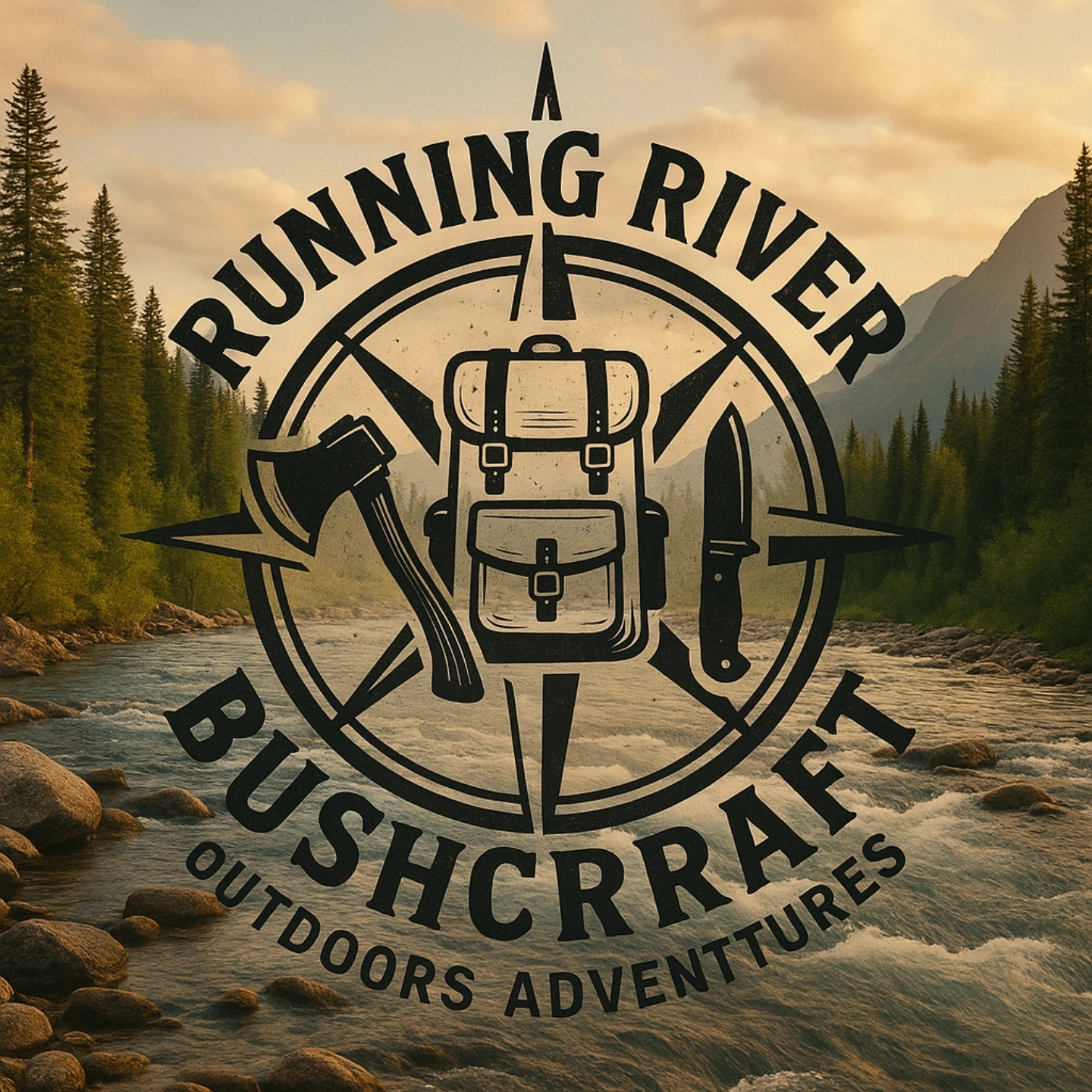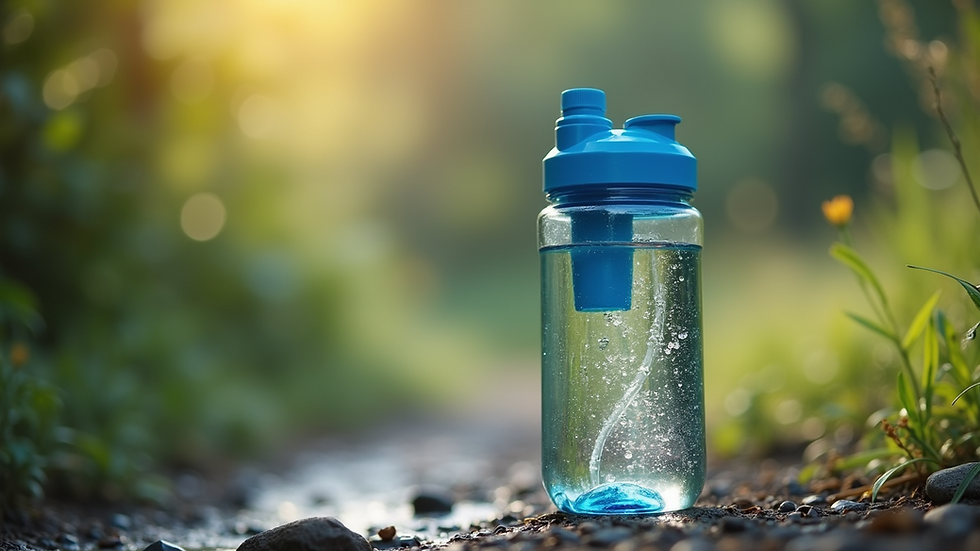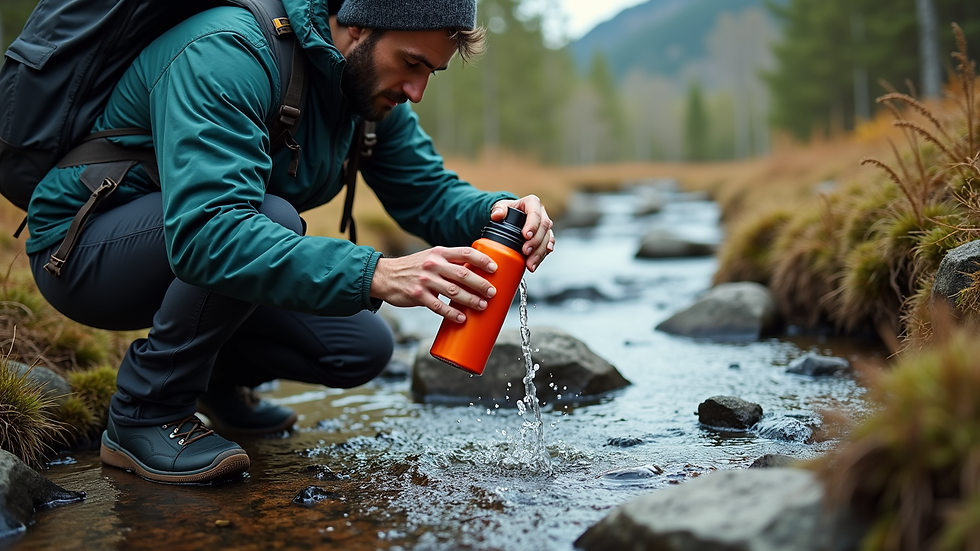Effective Water Purification Techniques for Outdoors
- Richard Bourne

- Aug 26
- 4 min read
When you're out in the wild, having access to clean water is crucial. Whether you're camping, hiking, or practicing bushcraft, knowing how to purify water effectively can make a big difference in your safety and comfort. Water from natural sources like rivers, lakes, or streams often contains bacteria, protozoa, viruses, and other contaminants that can cause illness. So, it’s important to treat it before drinking. In this post, I’ll walk you through some of the most reliable methods to purify water outdoors, share what hikers commonly use, and offer practical tips to help you stay hydrated and healthy on your trips.
Understanding Outdoor Water Purification Basics
When it comes to outdoor water purification, the goal is to remove or kill harmful microorganisms and sometimes chemical pollutants. There are several methods available, each with its pros and cons depending on your situation, gear, and the water source. Some techniques focus on filtering out particles and microbes, others use chemicals to kill pathogens, and some rely on heat or UV light.
The first step is always to collect water from the cleanest source possible. Avoid stagnant water or areas near human activity, as these are more likely to be contaminated. Once you have your water, you can apply one or more purification methods.
Here are some common approaches:
Boiling: The simplest and most effective way to kill bacteria, viruses, and protozoa. Boil water for at least one minute (or three minutes at higher altitudes) to ensure safety.
Filtration: Using a portable water filter to physically remove particles and microorganisms. Filters vary in pore size and effectiveness.
Chemical Treatment: Adding tablets or drops containing iodine, chlorine, or chlorine dioxide to kill pathogens.
UV Light Purification: Using a UV pen or device to disrupt the DNA of microorganisms, rendering them harmless.
Each method has its place depending on your gear, time, and water quality.

Choosing the Right Outdoor Water Purification Method for Your Trip
Selecting the best purification method depends on several factors like the length of your trip, the type of water sources you expect, your weight allowance, and how quickly you need clean water. For example, if you’re on a short day hike, carrying a small UV purifier or chemical tablets might be enough. For longer trips, a reliable filter combined with boiling might be better.
Here’s a quick guide to help you decide:
Boiling
Pros: Kills all pathogens, no chemicals needed
Cons: Requires fuel and time, water tastes flat
Best for: Base camps, when you have time and fuel
Filters
Pros: Quick, removes sediment and many microbes
Cons: Some don’t remove viruses, filters can clog
Best for: Fast access to water on the move
Chemical Treatments
Pros: Lightweight, easy to carry
Cons: Takes time to work, some people dislike taste
Best for: Emergency backup or lightweight trips
UV Purifiers
Pros: Fast, effective against viruses and bacteria
Cons: Requires batteries, water must be clear
Best for: Tech-savvy hikers with clear water sources
Sometimes combining methods is the safest bet, like filtering first to remove sediment, then using chemical treatment or UV light to kill remaining pathogens.

What do hikers use to purify water?
Hikers often rely on a mix of methods depending on their preferences and the environment. Many carry lightweight water filters like the Sawyer Mini or LifeStraw because they are easy to use and remove most bacteria and protozoa. However, since these filters don’t always remove viruses, some hikers also carry chemical tablets as a backup.
Others prefer UV purifiers like the SteriPEN, which are fast and effective but require batteries and clear water. Boiling is less common on the trail due to the time and fuel needed but is still a trusted method at campsites.
In general, hikers prioritize gear that is:
Lightweight and compact
Easy to use on the go
Reliable against a broad range of pathogens
If you want to learn more about practical water purification techniques and gear recommendations, Running River Bushcraft offers great resources and products designed for outdoor enthusiasts.

Tips for Safe Water Collection and Storage Outdoors
Purifying water is only part of the process. How you collect and store it matters too. Here are some tips to keep your water safe:
Collect from flowing water rather than stagnant pools, as moving water is less likely to harbor harmful bacteria.
Avoid water near animal activity or human waste to reduce contamination risk.
Use clean containers for collecting and storing water. If possible, rinse bottles with purified water before filling.
Keep purified water separate from untreated water to avoid cross-contamination.
Store water in cool, shaded places to prevent algae growth and maintain freshness.
Use water bladders or bottles with wide mouths for easier cleaning and drying.
By following these simple steps, you reduce the chance of recontaminating your water after purification.
Preparing for Emergencies: Backup Water Purification Options
No matter how well you plan, things can go wrong. Your primary water purification method might fail, or you might find yourself in unexpected conditions. That’s why it’s smart to carry backup options.
Some good emergency choices include:
Chemical tablets: Lightweight and compact, they can be stored for years and used when other methods aren’t available.
Portable filters: Small straw-style filters can be a lifesaver if your main filter breaks.
Boiling kit: A small, lightweight stove or metal container can help you boil water if needed.
Solar disinfection (SODIS): Using clear plastic bottles left in the sun for 6 hours can reduce pathogens, though it’s less reliable.
Having multiple options ensures you’re prepared for different scenarios and water conditions.
Knowing how to purify water outdoors is essential for any adventure. By understanding the strengths and limitations of each method, choosing the right gear, and practicing safe collection and storage, you can stay hydrated and healthy no matter where your journey takes you. For reliable bushcraft and camping gear that supports your water purification needs, check out Running River Bushcraft’s selection to feel confident and prepared in the wild.


Comments